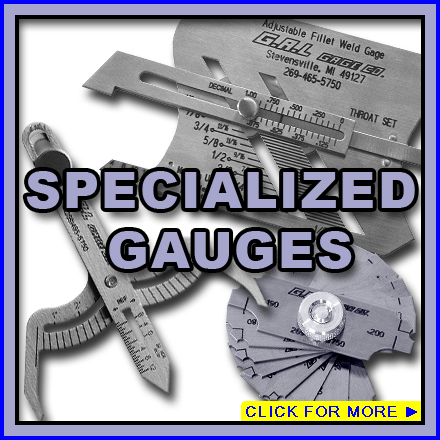The Role of Gauge Fillet Weld in Structural Integrity: What You Required to Know
The Role of Gauge Fillet Weld in Structural Integrity: What You Required to Know
Blog Article
Fillet Weld Design Strategies: Maximizing Joint Efficiency and Looks for Structural Integrity
In the world of architectural engineering and construction, the significance of fillet weld layout strategies can not be overstated. By thoroughly considering elements such as weld profile optimization, material choice, joint prep work methods, welding process effectiveness, and aesthetic improvement makers, designers and techniques can attain a harmonious equilibrium in between performance and appearance in their welded frameworks.
Weld Account Optimization


Attaining an optimum weld profile involves a thorough consideration of aspects such as material thickness, joint arrangement, welding setting, and desired welding speed. Furthermore, the option of proper welding specifications, such as voltage, existing, and take a trip speed, is fundamental in managing the form and dimensions of the fillet weld. Using sophisticated welding strategies, such as pulse welding or robotic welding, can further refine the weld profile to satisfy certain design demands and top quality requirements.
Basically, weld profile optimization is a fundamental element of fillet weld layout that straight affects the total performance and dependability of welded joints in structural applications.
Product Option Considerations
When thinking about product choice for fillet weld design, the compatibility of the base metals is a crucial element affecting the architectural stability of the joint. It is important to select materials that not just bonded with each other properly but likewise have comparable mechanical buildings to ensure the load is evenly dispersed between the base and the weld steels. Welding materials with greatly different buildings can result in problems such as tension focus, premature joint failing, or splitting.
Furthermore, the environment in which the bonded framework will run have to be considered when picking materials. Elements like corrosion resistance, temperature level fluctuations, and exposure to chemicals can all impact the durability and performance of the weld joint. By selecting materials that appropriate for the intended application and atmosphere, the overall resilience and reliability of the bonded joint can be dramatically boosted.
For that reason, thorough consideration of product compatibility and environmental aspects is paramount in ensuring the weld joint's strength, longevity, and general architectural stability.

Joint Prep Work Methods
Thinking about the crucial duty product selection plays in guaranteeing the architectural honesty of fillet weld joints, it is important to carry out precise joint prep work techniques that enhance the connection between the base metals. Joint preparation is a critical action that straight influences the quality and stamina of the weld.
Additionally, correct fit-up of the joint is necessary to ensure uniform circulation of the welding material and avoid problems like insufficient infiltration or extreme build-up. Beveling the sides of the base steels can develop a groove that permits for much deeper weld infiltration and a more powerful bond. In addition, tack welding the elements in position before the final weld assists maintain placement and minimizes distortion during the welding procedure. By carefully following these joint prep work techniques, welders can boost the overall performance and visual appeals of fillet weld joints while making sure architectural stability.
Welding Refine Performance
Reliable welding procedures are vital for achieving optimum efficiency and high quality in fillet weld construction. One key aspect of boosting welding procedure effectiveness is choosing the ideal welding method. Variables such as material kind, joint style, and welding setting should be very carefully considered to determine one of the most suitable technique. As an example, procedures like gas steel arc welding (GMAW) and flux-cored arc welding (FCAW) are generally utilized for fillet welds as a result of their flexibility and speed (Gauge Fillet Weld).
Additionally, guaranteeing proper devices arrangement and maintenance is crucial for effective welding. Regular calibration of welding devices, Homepage assessment of consumables, and maintenance of welding torches can protect against downtime and revamp, eventually saving time and sources. Additionally, utilizing experienced welders with knowledge in the details welding procedure being used can considerably impact performance. Trained welders are more skilled at changing specifications, repairing problems, and keeping constant weld top quality.
Visual Improvement Techniques
To enhance the quality of fillet weld construction, implementing visual enhancement methods can play a crucial function in making sure precision and precision throughout the welding procedure. Visual aids such as weld dimension gauges and magnifying lenses can assist in analyzing weld profiles and measurements accurately. By integrating these aesthetic enhancement approaches right into the welding process, welders can attain not only structurally audio fillet welds yet additionally visually appealing outcomes that satisfy market criteria.

Final Thought
In verdict, enhancing fillet weld layout involves mindful consideration of weld profile, material option, joint preparation, welding process performance, and aesthetic improvement methods. By applying these approaches, architectural honesty can be boosted while additionally accomplishing visual charm. It is vital to my website prioritize both performance and aesthetic appeals in fillet weld style to guarantee the overall top quality and durability of the joint.
By diligently thinking about elements such as weld account optimization, material choice, joint preparation strategies, welding procedure efficiency, and visual improvement engineers, methods and producers can accomplish an unified balance between performance and site web look in their bonded structures.In the realm of fillet weld layout, optimizing the weld profile plays an important function in ensuring structural honesty and efficiency. The weld profile, which includes the dimension and shape of the weld cross-section, straight impacts the distribution of stress and anxiety and load-bearing capacity within the joint. It is vital to select materials that not only weld together efficiently but likewise have comparable mechanical homes to make certain the tons is uniformly dispersed in between the weld and the base metals - Gauge Fillet Weld.In verdict, enhancing fillet weld design includes careful consideration of weld account, material option, joint prep work, welding process performance, and visual improvement techniques
Report this page